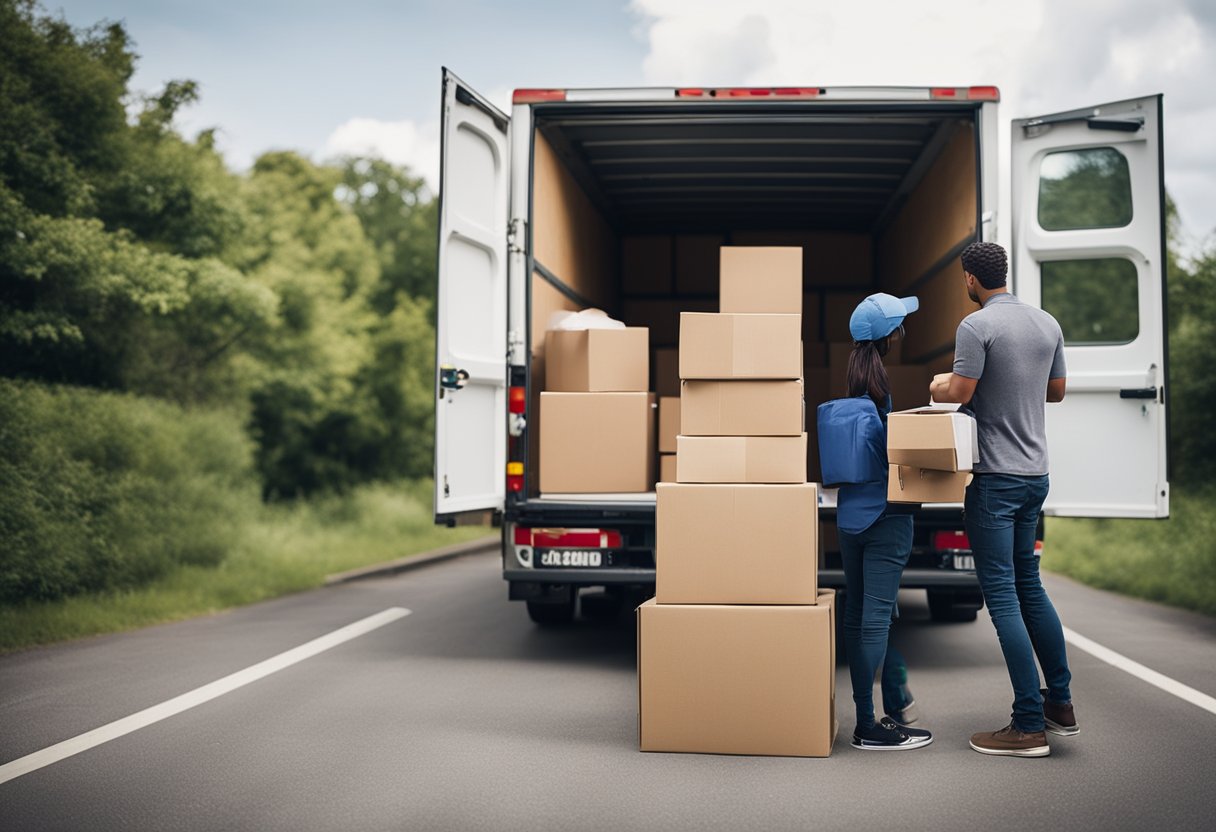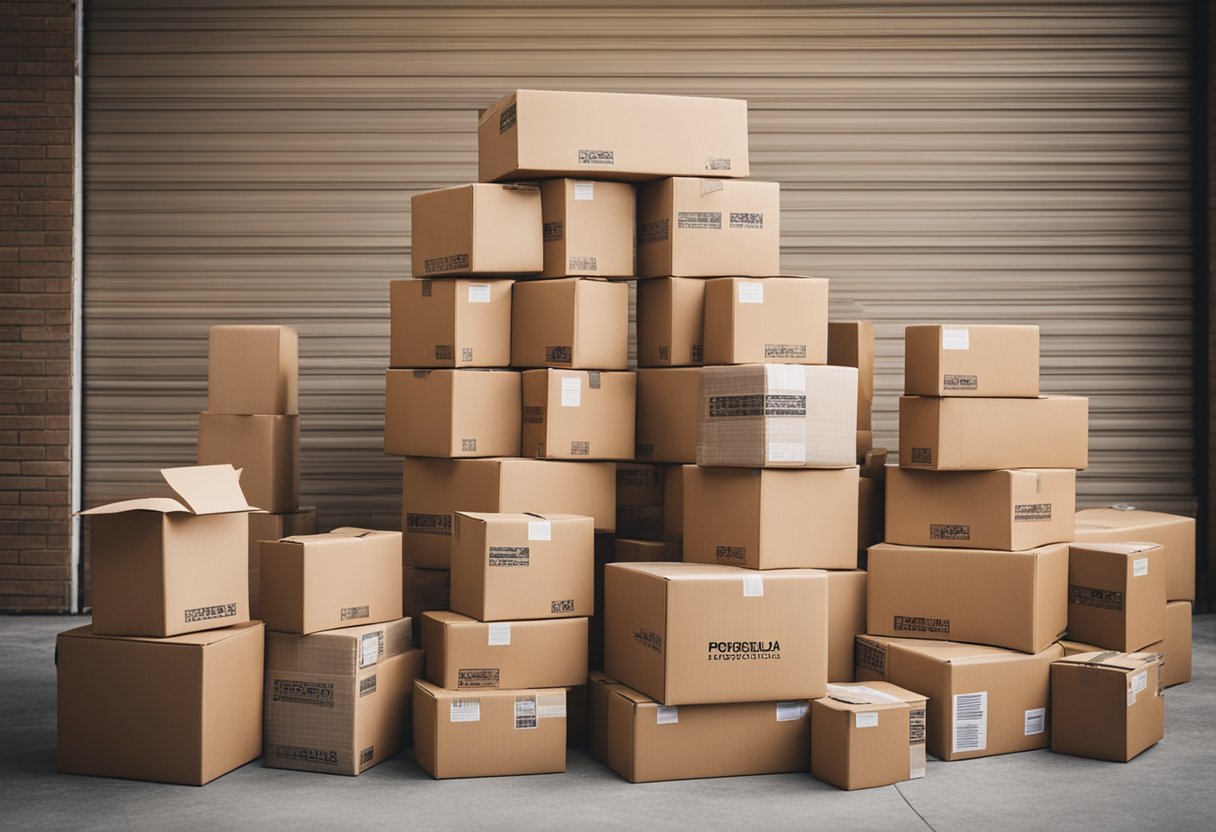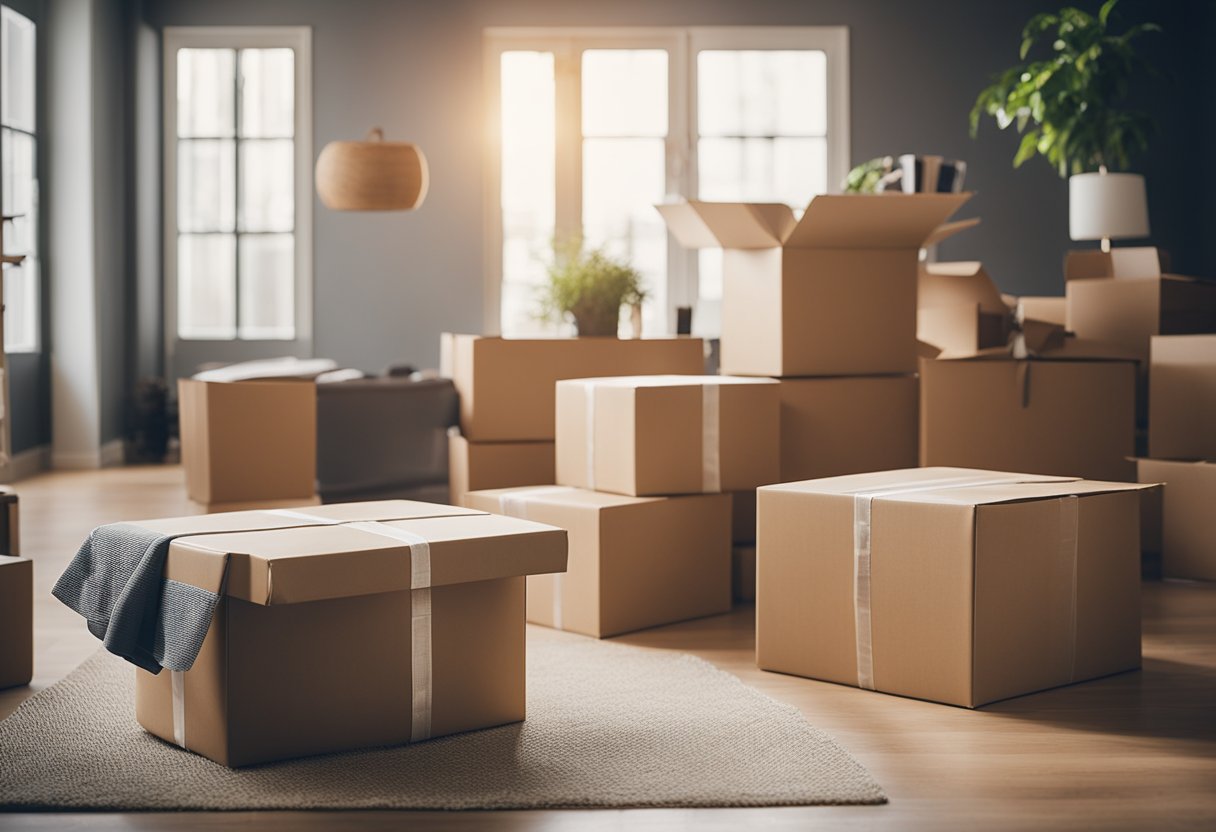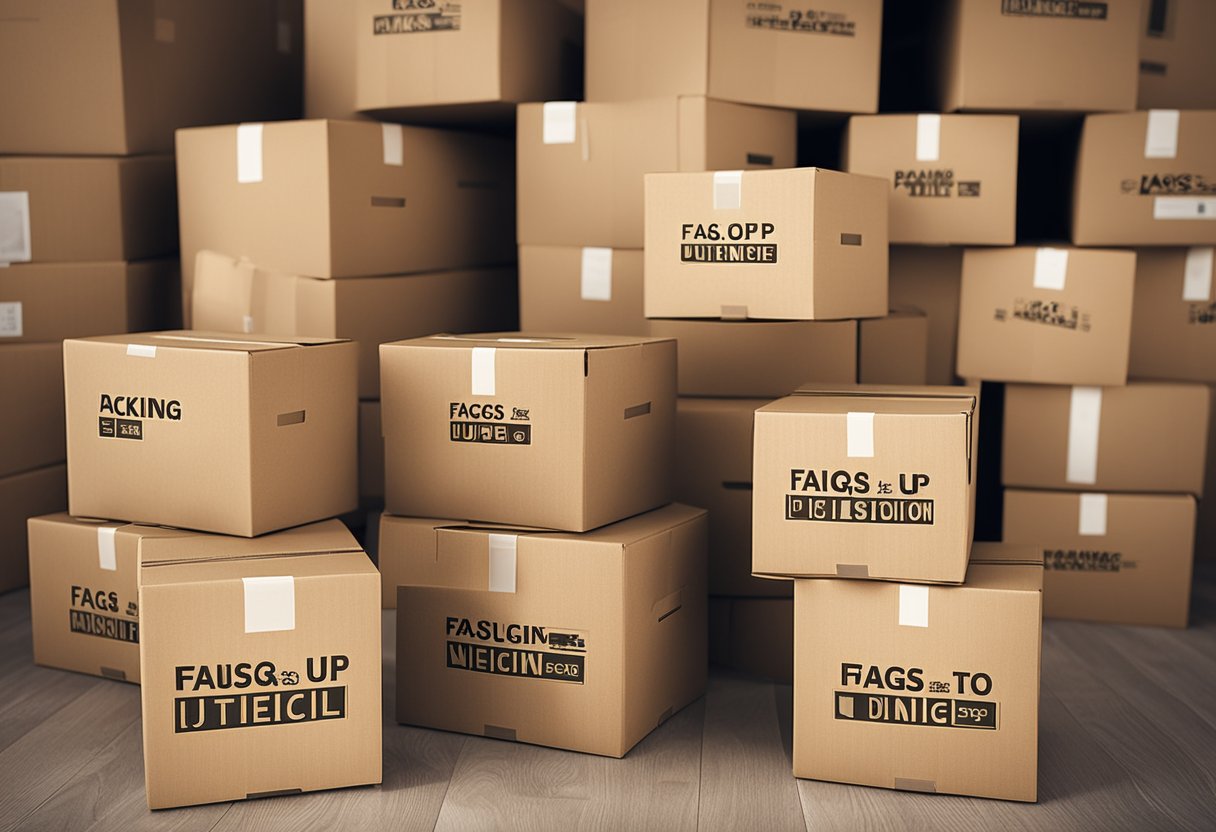Moving into a new house can be an exciting milestone, but the process often comes with its own set of challenges. Consider it a fresh start, an opportunity to organize your life in a space untouched by your past routines and clutter. All of the preparation you did for your old home to show it off and sell it will have come in handy to streamline the moving process.
To ensure this transition to your new abode is more joy than trouble, a handful of practical moving hacks can make a significant difference. These hacks are designed to streamline packing, transporting, and unpacking, turning what could be a stressful endeavor into a manageable one.

Effective planning is the foundation of a smooth move. Creating a moving checklist tailored to your specific needs can keep you organized and focused. Labeling boxes by room and importance will help not only in the packing phase but also when it’s time to unpack in your new house. For fragile items, consider using clothes and linens as eco-friendly packing materials that offer protection while reducing waste.
Arriving at your new home should be the beginning of your nesting phase, not cause for exhaustion. With strategic disassembly of furniture and electronic equipment, including taking photos or making notes for reassembly, you can save time and avoid confusion later. Ensure essentials like a toolkit, toiletries, and a change of clothes are easily accessible. This way, your first night in your new place can be spent with comfort and calm, setting the tone for your life in your new home.
Packing and Organizing

The key to smooth relocation lies in methodical packing and thorough organizing. The following strategies will equip you with a structured approach to make your move as efficient as possible.
Sorting and Decluttering
Begin by sorting your belongings into categories. This not only makes packing easier but is also an opportune moment to declutter. Itemize your possessions and decide what to keep, donate, or sell in a yard sale. Use clear moving supplies like plastic bins for items you wish to donate and boxes for things you plan to sell.
- Keep: Every item you use regularly or has sentimental value.
- Donate/Sell: Items in good condition but no longer needed.
- Discard: Items that are broken or have no value.
For items to be donated:
| Item Category | Destination | Notes |
|---|---|---|
| Clothing | Charity Shop | Wash before donating |
| Books | Library or School | Ensure they are gently used |
| Furniture | Donation Center | Check if pickup service is available |
Packing Strategies
Use a systematic approach when packing. Begin with items you use less frequently, leaving daily essentials for last. Secure moving boxes and packing supplies such as tape, bubble wrap, and packing paper.
- Label each box with a color-code system and detailed list of contents using a label maker.
- Keep an inventory or checklist of packed boxes to track your items.
Essentials:
- Moving Boxes: Different sizes for various items.
- Packing Supplies: Bubble wrap for fragile items, packing paper for cushioning.
- Label Maker: For easy identification of box contents.
Furniture and Appliance Preparation
Prepare furniture and appliances by ensuring they are clean and disassembled if necessary. Use padding to protect corners and wrap fragile parts with protective materials.
- Furniture: Remove legs and wrap separately. Keep screws and small parts in a labeled bag attached to the piece of furniture.
- Appliances: Secure cords and doors. If moving a fridge, defrost and clean it in advance.
- Wrap glass surfaces with bubble wrap and secure with tape.
- Cushion appliances with towels or blankets for extra protection during transport.
Essentials for the First Night
Pack a suitcase or an essentials box with items you’ll need for the first night in your new home. Include toiletries, snacks, a change of clothes, towels, bedding, and any necessary chargers.
First Night Checklist:
- Bedding: For a good night’s sleep after a long day of moving.
- Towels: For a refreshing shower.
- Snacks: To keep your energy up without needing to cook.
Remember to keep this essentials box or suitcase with you during the move, so it’s immediately accessible upon arrival at your new home.
Moving Day Coordination

Efficiently coordinating moving day activities is essential to ensure a smooth transition into your new house. This involves doing last-minute checks, effectively working with movers, and managing your personal travel plans to align with the moving schedule.
Last-Minute Checks
Before the movers arrive, confirm that everything is packed, labeled, and ready to go. Perform a final walk-through of your current home to check for any items that might have been overlooked. Here’s a quick checklist to guide you:
- Pack an essentials box: Include items you’ll need immediately upon arrival, like toiletries and a change of clothes.
- Final inspection: Make sure all utilities are functioning for the movers, and nothing is left behind.
- Secure personal documents: Keep passports, birth certificates, and moving documents on your person.
Working With Movers
Clear communication with your moving company is vital to synchronize your efforts. Take inventory as items are loaded onto the truck, which will simplify unpacking and ensure nothing gets misplaced.
- Budget management: Get a clear understanding of all fees and services to avoid surprises.
- Mover’s contact information: Exchange numbers to maintain communication throughout move-in day.
Personal Travel Plans
Your move isn’t just about your belongings; it’s about relocating your life. Coordinate your travel plans with the moving schedule, considering the needs of children and pets if applicable.
- Vehicles: Ensure your car is serviced and ready for the trip, or arrange transportation if you aren’t driving.
- Care providers: Inform babysitters, pet sitters, and others involved in your care network of your itinerary and expected arrival time.
By attending closely to these details, you set the stage for a well-organized and less stressful moving day.
Setting Up Your New Home

Moving into a new house is an exciting chapter in your life. It’s essential to start with a clean canvas by addressing home maintenance and cleanliness, then positioning your possessions strategically for daily convenience, and ensuring your safety and security for peace of mind.
Cleaning and Maintenance
Before arranging your furniture, take the opportunity to deep clean your new home. Start by purchasing essential cleaning supplies; include scrub brushes, microfiber cloths, a mop, and environmentally friendly cleaning agents.
- Painting: Assess the walls for chips or color inconsistencies, and apply a fresh coat if necessary.
- Repairs: Check for any minor repairs needed, such as fixing leaky faucets or squeaky doors.
- HVAC System: Inspect the HVAC system to ensure it functions efficiently and replace filters to improve air quality.
- Dryer Vent and Chimney: Clear out the dryer vent and have the chimney inspected to avoid fire hazards.
- Landscaping: Tidy up the outdoor space, trim any overgrown landscaping, and check sprinkler systems.
Unpacking and Placement
Having a methodical approach to unpacking will save you time and frustration.
- Organization: Sort your items by category, and start with essentials such as bedding and toiletries.
- Furniture and Closet: Arrange your furniture to maximize space and create a comfortable flow. Install shelf organizers in your closet for better organization.
- Utilities and USPS: Make sure that all your utilities are up and running. Submit a change of address form with the USPS and update your address on important accounts such as Amazon to ensure delivery of your packages.
Safety and Security
Ensure your new home is a safe haven by installing and checking various security measures.
- Locks: Change the locks on all exterior doors to ensure only you have access to your home.
- Home Security System: Consider installing a home security system that allows you to monitor your home remotely.
- Carbon Monoxide Detectors and Fire Protection: Install carbon monoxide detectors near bedrooms and check that smoke detectors are in every room. Ensure you have a fire extinguisher on each level of the home, especially in the kitchen.
- Windows: Inspect all windows to ensure they close properly and have secure locks.
By following these steps, your new house will quickly become a functional and secure home.
Frequently Asked Questions

When preparing for a move, having the right information can make all the difference. These FAQs cover essential strategies to help you organize and execute your move with ease.
What are the top tips to effectively pack for a move within a limited timeframe?
To pack effectively within a limited timeframe, start by decluttering your belongings to minimize what you need to pack. Use wardrobe boxes to quickly transfer clothes, and remember to label all your boxes with their contents and intended room.
Could you provide a comprehensive move-in checklist to ensure nothing gets overlooked?
Your move-in checklist should include: transferring utilities, updating your address, packing an essentials box, confirming details with movers, and preparing to clean your new space before unpacking.
What are some clever moving tips and hacks that can be found at a dollar store?
At a dollar store, you can find packing materials, cleaning supplies, and organization tools such as marker pens for labeling, bubble wrap for fragile items, and containers to keep small items together during the move.
What strategies do professional organizers recommend for a smoother moving process?
Professional organizers recommend decluttering your home before packing, creating an inventory, packing one room at a time, and keeping a separate box for essentials that you’ll need immediately upon arrival.
Which room should be prioritized during the packing phase when moving into a new space?
Start packing the least-used rooms first, such as guest bedrooms or living rooms. Saving daily-use rooms like the kitchen and bathroom for last allows you to continue your routine with minimal disruption.
What are the essential items to set aside that should not be packed during a move?
Key items not to pack include important documents, chargers, medications, basic toiletries, a change of clothes, snacks, and anything else you might need easy access to within the first 24 hours in your new home.
